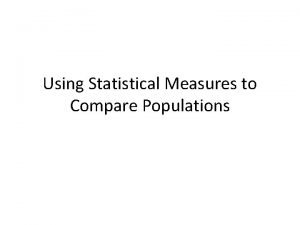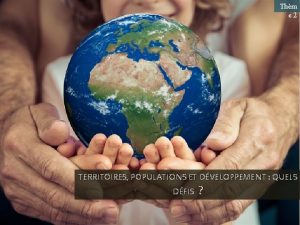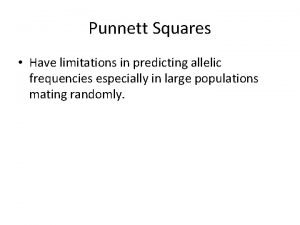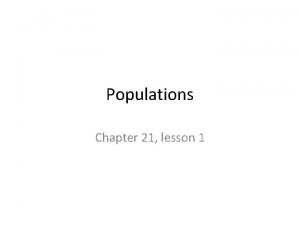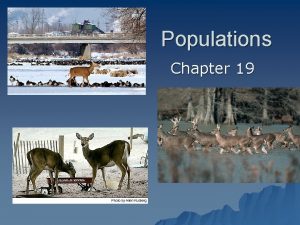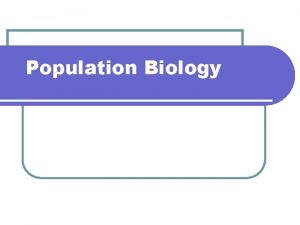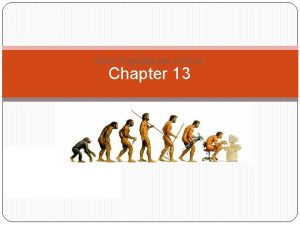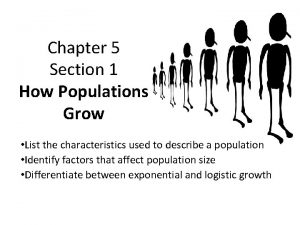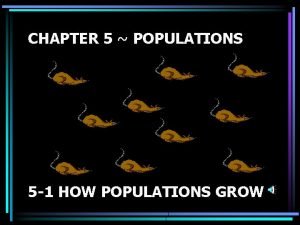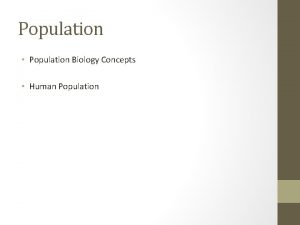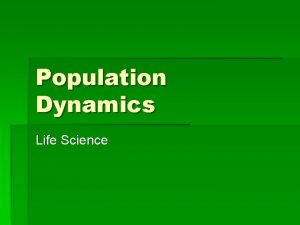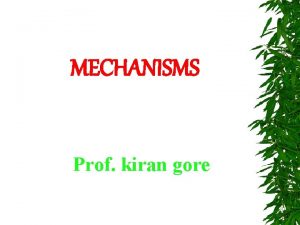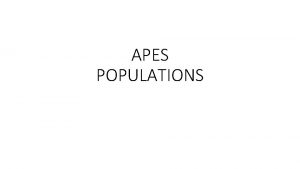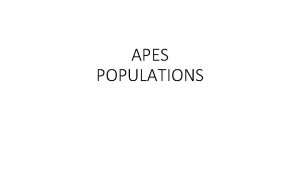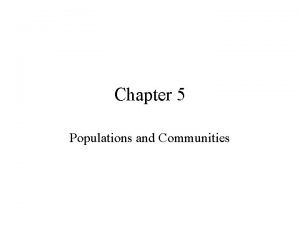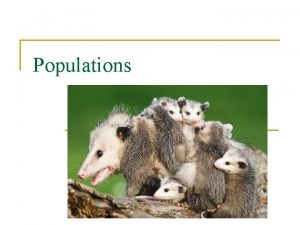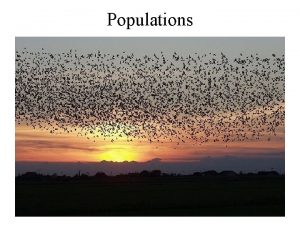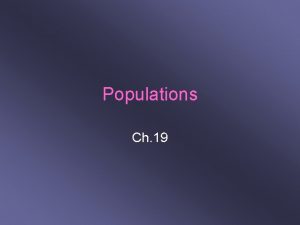Mechanisms of Population Change n Populations may change





















- Slides: 21

Mechanisms of Population Change n Populations may change through two major genetic forces: Natural Selection (includes artificial seltn) ¨ Genetic Drift ¨ n Two other forces that change a population: ¨ Mutations ¨ Gene flow ¨ Not much change, mutation is too rare & gene flow tends to equalize gene frequencies © 2006 W. W. Norton & Company, Inc. DISCOVER BIOLOGY 3/e 1

Natural Selection Occurs because: n n n Organisms with favorable traits… chance at survival The longer an organism lives, more offspring it may have More of the next generation will have the favorable trait than the previous generation 2

Natural Selection n n Individuals of one phenotype are favored Peppered moths © 2006 W. W. Norton & Company, Inc. DISCOVER BIOLOGY 3/e 3

Genetic Drift n Differences in reproduction or survival between organisms due to random chance ¨ Environmental disturbances can cause genetic drift as long as they act at random: n n Hurricanes Volcanic eruptions (Mt. St. Helens) ¨ Can be from random events ¨ seeds from white flowers are blown to gravel, some seeds from red flowers blown to good soil. 4

Genetic Drift © 2006 W. W. Norton & Company, Inc. DISCOVER BIOLOGY 3/e 5

How Populations Change Mutation creates genetic variation (genes) n Gene flow, genetic drift and natural selection act on this genetic variation to change allele frequencies in populations n Gene flow tends to equalize allele frequencies between 2 pops. ¨ Genetic drift and natural selection tend to diverge allele frequencies between 2 pops. (populations tend to diverge) ¨ © 2006 W. W. Norton & Company, Inc. DISCOVER BIOLOGY 3/e 6

Adaptations n Adaptation –a characteristic that improves the survival of a population or individual © 2006 W. W. Norton & Company, Inc. DISCOVER BIOLOGY 3/e 7

Adaptation n An improvement in a population over time, changing a population to better fit its environment Only the result of natural selection acting on genetic variation, no other force adapts a population Environments change and new genetic variation arises, so adaptation never reaches perfection © 2006 W. W. Norton & Company, Inc. DISCOVER BIOLOGY 3/e 8

What are Species? n Members of a species generally look alike ¨ Bald eagles in Alaska (top) & Colorado (bottom) ¨ But not always n Species –are reproductively isolated from other species, meaning that one can only reproduce within one’s own species © 2006 W. W. Norton & Company, Inc. DISCOVER BIOLOGY 3/e 9

Walking Sticks n n Adapting to match their environment (two mating pairs) Striped form is well-hidden among the needle-like leaves w/ stripes, solid form among solid leaves © 2006 W. W. Norton & Company, Inc. DISCOVER BIOLOGY 3/e 10

Walking Sticks n n n The striped form prefers needle-like leaves of the chemise (sheh-mēz) bush. The solid-green form prefers the solid green leaves of the wild lilac. The two forms are more likely to survive on their preferred plant. ¨ Predators (birds) more likely to catch them if they are not on their preferred plant. © 2006 W. W. Norton & Company, Inc. DISCOVER BIOLOGY 3/e 11

Walking Sticks Is a complex adaptation, more than coloration. n Lilac and chemise bush leaves have different pulp, fiber, chemical contents, and plant toxins. n The solid-green walking sticks have enzymes to better digest the leaves of the wild lilac. n The striped form has enzymes adapted to better digest the leaves of the chemise bush. © 2006 W. W. Norton & Company, Inc. DISCOVER BIOLOGY 3/e 12

Walking Sticks n “Hybrid offspring” of a cross between solid and striped parents are less fit than offspring of a single form mating. ¨ Do not blend as well on either Lilac or chemise bush leaves; predators more likely to eat them. ¨ Do not digest either plant as well as single forms. © 2006 W. W. Norton & Company, Inc. DISCOVER BIOLOGY 3/e 13

Walking Sticks Because “Hybrid offspring” (a solid & striped cross) are less fit than “single form” offspring, the population is adapting in one other way: ¨ Individuals prefer to mate with others of the same color pattern. © 2006 W. W. Norton & Company, Inc. DISCOVER BIOLOGY 3/e 14

Walking Sticks n n Population is diverging with respect to alleles for: ¨ coloration (once were all green), ¨ digestion (once were generalists), ¨ dealing with plant toxins, ¨ mating behavior. Natural selection is better adapting each form to their preferred plant. © 2006 W. W. Norton & Company, Inc. DISCOVER BIOLOGY 3/e 15

n n W/ time, natural selection will further diverge the two forms & further decrease their interbreeding. When the two forms loose the ability to interbreed, they will become two different species. © 2006 W. W. Norton & Company, Inc. DISCOVER BIOLOGY 3/e 16

Speciation n n When one species splits to form two species Results from reproductive isolation Often, it is a secondary consequence of changing populations Occasionally, is a direct consequence of a diverging population ¨ The hybrid is less fit, walking sticks © 2006 W. W. Norton & Company, Inc. DISCOVER BIOLOGY 3/e 17

Biological Evolution Is a change in the genetic characteristics of a population over time n If any allele frequency in a population changes w/ time, the population is evolving n Most people think of evolution as Darwin’s speciation, but this is not correct n © 2006 W. W. Norton & Company, Inc. DISCOVER BIOLOGY 3/e 18

Biological Evolution n Only populations can evolve; individuals cannot ¨ (on molecular level, genes can evolve) Small scale change = microevolution n Large scale change = macroevolution n © 2006 W. W. Norton & Company, Inc. DISCOVER BIOLOGY 3/e 19

Biological Evolution n Macroevolution ¨ can lead to speciation, but it does not have to ¨ has occurred in dogs © 2006 W. W. Norton & Company, Inc. DISCOVER BIOLOGY 3/e 20

Review n Understanding evolution has impacted our use of Antibiotics and our understanding the development of drug resistance n Doonesbury cartoon? n Understanding evolution has impacted our understanding of the world (shown at right) n Review of agents of change video 21
 Chapter 4 population ecology answer key
Chapter 4 population ecology answer key Section 1 population dynamics answer key
Section 1 population dynamics answer key Population ecology section 1 population dynamics
Population ecology section 1 population dynamics Chapter 4 population ecology answer key
Chapter 4 population ecology answer key Hci patterns may or may not include code for implementation
Hci patterns may or may not include code for implementation Using statistical measures to compare populations
Using statistical measures to compare populations Territoires populations et développement quels défis
Territoires populations et développement quels défis Stabilizing selection human birth weight
Stabilizing selection human birth weight A biologist discovers two populations of wolf spiders
A biologist discovers two populations of wolf spiders Limitations of punnett squares
Limitations of punnett squares Lesson 1 populations answer key
Lesson 1 populations answer key Section 19-2 review measuring populations
Section 19-2 review measuring populations Chapter 16 evolution of populations vocabulary review
Chapter 16 evolution of populations vocabulary review Individuals don't evolve populations do
Individuals don't evolve populations do Populations biology definition
Populations biology definition Section 5-1 how populations grow answer key
Section 5-1 how populations grow answer key Kde inclusion of special populations
Kde inclusion of special populations Chapter 13 how populations evolve test
Chapter 13 how populations evolve test Chapter 17 evolution of populations answer key
Chapter 17 evolution of populations answer key 5-1 how populations grow
5-1 how populations grow 5-1 how populations grow
5-1 how populations grow Chapter 23 the evolution of populations
Chapter 23 the evolution of populations





